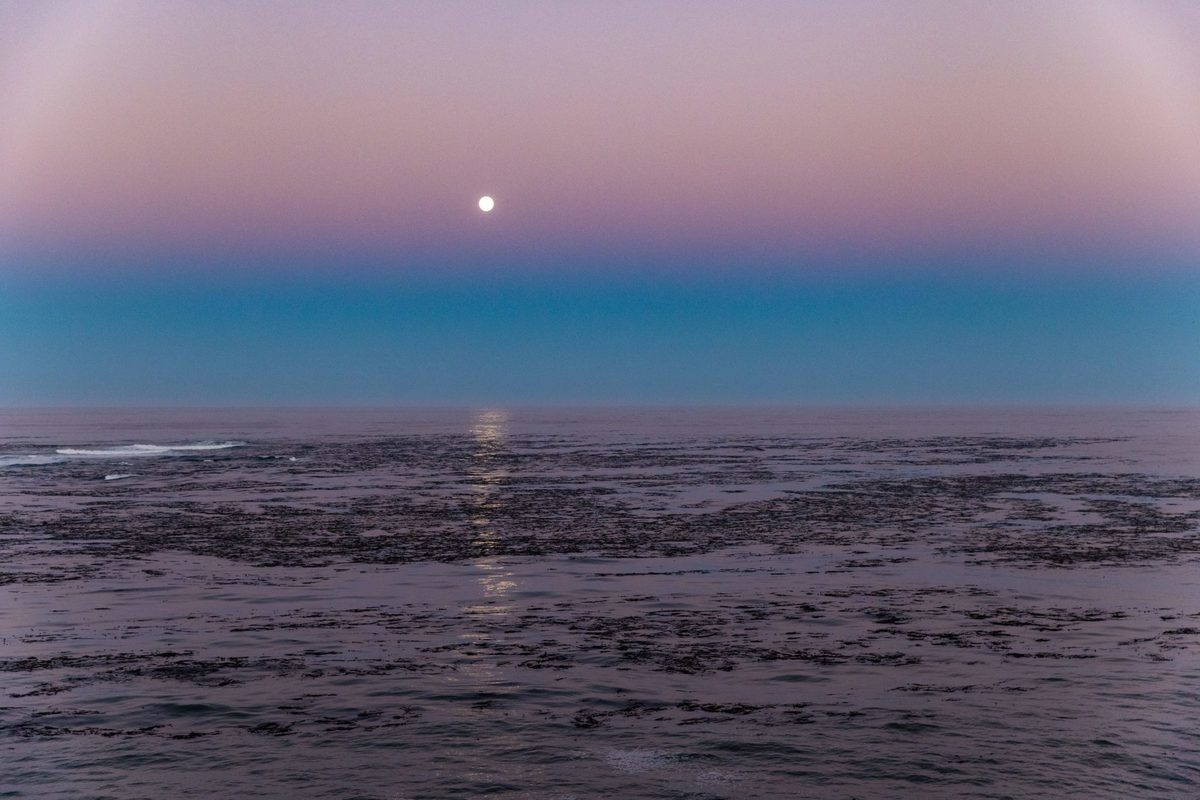Woods Hole Oceanographic Institution and collaborators launch world’s largest kelp map
Woods Hole Oceanographic Institution and collaborators launch world’s largest kelp map
 Kelp helps form the backbone of the ecosystems in which they are found, providing habitat and food for thousands of species. To further investigate and track kelp growth and survival over time, WHOI and collaborators have launched the world’s largest map of kelp forest canopies extending from Baja California, Mexico to the Oregon-Washington border. Image credit © Ralph Pace.
Kelp helps form the backbone of the ecosystems in which they are found, providing habitat and food for thousands of species. To further investigate and track kelp growth and survival over time, WHOI and collaborators have launched the world’s largest map of kelp forest canopies extending from Baja California, Mexico to the Oregon-Washington border. Image credit © Ralph Pace.
Read this at WHOI.
Woods Hole, MA – Kelp forests provide myriad benefits to nature and people in oceans around the world. They form the backbone of the ecosystems in which they are found, providing habitat and food for thousands of species. However, recent research suggests changing ocean conditions including marine heatwaves linked to climate change have led to the loss of kelp in many regions around the world, specifically the U.S. west coast off parts of California, with further declines anticipated in response to ocean warming.
To further investigate and track kelp growth and survival over time, Woods Hole Oceanographic Institution, The Nature Conservancy, University of California Los Angeles, and the University of California Santa Barbara have launched the world’s largest map of kelp forest canopies extending from Baja California, Mexico to the Oregon-Washington border. Tom Bell, an assistant scientist at WHOI, originally partnered with UCLA to pioneer the technique to map kelp forest density using satellite imagery. This then developed into a cost-effective, innovative online visualization tool to improve kelp forest mapping and monitoring - now housed on Kelpwatch.org.
Kelpwatch.org is an open-source web tool that uses machine learning and remote sensing science to display the kelp forest canopies and analyze the changes it undergoes over time. This mapping tool has been launched amid major, unprecedented declines in many kelp forest ecosystems, which provide crucial services to both humans and nature.
“The large spatial coverage of Kelpwatch.org paired with decades of historical data allows ecosystem managers and the public to examine how changes to kelp forests in their locations of interest compare to the past four decades,” said Bell. “Kelp forests are incredibly dynamic systems so having access to historical data gives anyone the power to determine if recent changes lie outside the range of natural variability.”
Using the tool to conduct analyses on kelp dynamics along the west coast of the U.S. in response to the 2014 - 2016 record-breaking marine heatwave, the Kelpwatch.org team has discovered a worsening collapse of kelp forests around the Monterey Peninsula, a well-known kelp-dominated stretch of California’s coast. While the loss around Monterey and elsewhere in the state is alarming, efforts to restore kelp forests are taking place in hardest hit areas like the North Coast. The team also found reasons for hope, with the rapid recovery of kelp canopy cover in Bahía Tortugas and Baja California Sur, that showed complete and sustained recovery from the marine heat wave since 2018.
Prior to Kelpwatch.org, there was a noticeable lack of historical data on trends and changes in kelp forest abundance across large areas, posing a challenge for researchers and state agencies. The web tool and its data have been used already to inform the California Department of Fish and Wildlife’s (CDFW) Enhanced Status Report for kelp, as well as the Kelp Restoration Management Plan currently in development.
Funded by a multi-year grant from NASA’s Ocean Biology and Biochemistry program, the team plans to expand the tool to new geographies around the world where kelp forests are found, including Washington State, British Columbia, Southeast Alaska, the Falkland Islands, Chile, Tasmania, and Australia.
“Kelp forests are home to thousands of species, locally mitigate the effects of ocean acidification, and provide valuable services for coastal communities,” said Vienna Saccomanno, an ocean scientist with The Nature Conservancy. “Knowing where remaining healthy kelp forests are located and the long-term history of kelp forests is the first step in strategic restoration. Kelpwatch.org provides this information and is a game-changer for resetting the ecosystem.”
###
About Woods Hole Oceanographic Institution
The Woods Hole Oceanographic Institution (WHOI) is a private, non-profit organization on Cape Cod, Massachusetts, dedicated to marine research, engineering, and higher education. Established in 1930, its primary mission is to understand the ocean and its interaction with the Earth as a whole, and to communicate an understanding of the ocean’s role in the changing global environment. WHOI’s pioneering discoveries stem from an ideal combination of science and engineering—one that has made it one of the most trusted and technically advanced leaders in basic and applied ocean research and exploration anywhere. WHOI is known for its multidisciplinary approach, superior ship operations, and unparalleled deep-sea robotics capabilities. We play a leading role in ocean observation and operate the most extensive suite of data-gathering platforms in the world. Top scientists, engineers, and students collaborate on more than 800 concurrent projects worldwide—both above and below the waves—pushing the boundaries of knowledge and possibility. For more information, please visit www.whoi.edu.
